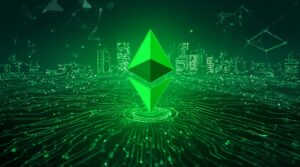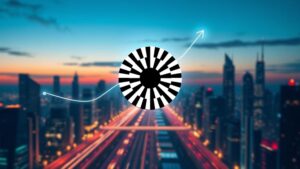The Internet of Things (IoT) has revolutionized the way we live, connecting our lives like never before. From wearable devices to smart homes, the IoT is a vast network of objects and devices that communicate and share information over the Internet.
Everyday objects such as appliances, cars, and clothing are embedded with software, sensors, and technologies that enable them to collect and share data. This connectivity brings numerous benefits to our lives, including increased productivity, convenience, and efficiency.
With IoT, you have the power to remotely control your home, monitor your fitness and health, and optimize industrial processes. However, as the connectivity and data sharing capabilities of IoT expand, concerns about security and privacy also arise. It is crucial to understand both the advantages and challenges associated with this technology.
At its core, the IoT integrates Internet capabilities into devices, systems, and processes. It represents a new generation of technology that requires specialized professionals, such as TechAhead, who are experts in developing and applying innovative techniques.
Breakdown
The IoT consists of a network of physical objects embedded with sensors, software, electronics, and network connectivity. This network allows these objects to collect and exchange information, enabling remote control across IoT networks and creating opportunities for integration between computer-based systems and the physical world.
The impact of IoT is far-reaching. By the end of 2023, it is estimated that there will be 13.1 billion devices connected to the IoT network, and this number is projected to reach 29.4 billion by 2030. The economic benefits, accuracy, and efficiency brought about by IoT are substantial.
IoT devices have transformed our daily routines, making tasks easier and more convenient. They allow you to control devices with a simple touch on your smartphone screen, managing your surroundings effortlessly.
Utility
The IoT serves as a valuable management tool, providing real-time data through applications connected to the cloud. This accessibility to data leads to informed remote decision-making and cost savings, making IoT an advantageous technology for businesses.
The possibilities with IoT are vast. From education to healthcare and fashion, IoT offers solutions across various fields by gathering and storing information from multiple sources in cloud networks.
The integration of sensors and connectivity into everyday objects enables digital intelligence and responsiveness. IoT bridges the gap between the digital and physical worlds, transforming objects into Internet-connected devices capable of communication and control.
The potential size of the IoT is immense, with more connected devices than there are people in the world. It aims to connect everything, from everyday objects to industrial equipment, even encompassing living organisms such as humans, animals, and plants.
The IoT market has seen significant growth and is projected to reach trillions of dollars by 2030. Increased urbanization and the adoption of smart city solutions have played a vital role in this growth, with North America currently holding the largest market share.
The IoT ecosystem consists of various layers, including endpoints, applications, and connectivity. Endpoints capture and transmit data from the environment or users, while applications analyze this data and provide insights or outputs to the system or user. Connectivity channels, such as networks and wireless technologies, enable data transmission to the cloud.
Impact
The impact of IoT is evident across industries like agriculture, healthcare, manufacturing, retail, and transportation. It optimizes processes, enhances efficiency, and improves decision-making. IoT devices monitor crop growth, enable remote patient monitoring, optimize production, and track shipments.
IoT brings about profound changes in healthcare, transportation, and public safety by providing timely and accurate information. It offers cost savings, efficiency improvements, and increased visibility in various business models, making tasks more manageable and productive.
Connected devices are transforming our daily lives, automating routines, and enhancing comfort. From turning off the alarm clock to pre-ordering groceries, IoT devices simplify tasks and offer personalized experiences. They revolutionize the automotive industry, enable remote operation, and improve maintenance.
IoT sensors detect equipment failures, optimize supply chains, and provide real-time data for better decision-making. They have become integral to industries, bridging the gap between the physical and digital realms.
In conclusion, the Internet of Things has connected our lives in unprecedented ways, offering numerous benefits and transforming industries. Its potential is vast, promising a future where the digital and physical worlds merge seamlessly, and everyday objects become intelligent, connected devices.










